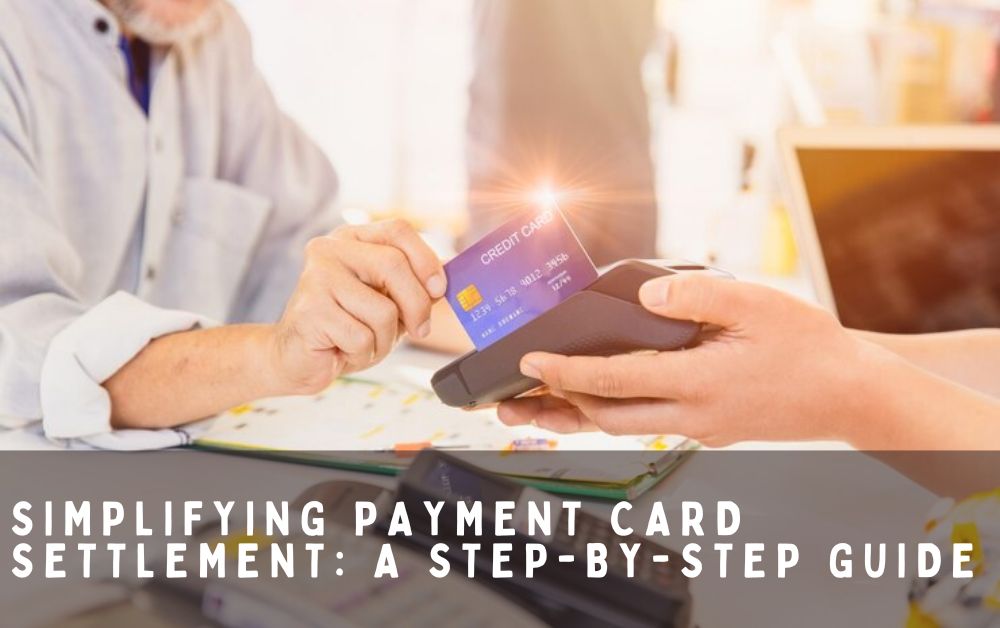Introduction
In today’s fast-paced world, understanding the nuances of Payment Card Settlement can be quite a task. This guide aims to simplify the process, breaking it down into easily digestible parts. We’ll explore what payment card settlement involves, the steps required, and key considerations, all in a language that’s easy to understand and relate to.
Decoding Payment Card Settlement
Payment card settlement is a vital process in today’s commerce, playing a crucial role in the financial cycle for businesses and consumers alike. This process encompasses the journey of a transaction made via debit or credit cards from initiation to finalization.
Understanding the Basics
At the heart of payment card settlement are four key players: the customer (cardholder), the merchant (business accepting the card), the acquiring bank (merchant’s bank), and the issuing bank (customer’s bank). When a customer makes a purchase with their card, this process ensures the smooth transfer of funds from the customer’s bank to the merchant’s bank, thereby completing the transaction.
The Role of Payment Processors
Payment processors act as the bridge between all parties involved in a transaction. They handle the technical side of processing both credit and debit card transactions. Their role is pivotal in ensuring that every transaction is secure, efficient, and successfully navigates through various security and verification checks.
The Settlement Process
From the moment a customer swipes their card to when the merchant receives the funds, the settlement process involves several critical stages.
Authorization and Authentication
The journey begins when a customer swipes their card, and the payment terminal contacts the card issuer for authorization. This crucial step involves verifying the card’s validity and ensuring there are sufficient funds for the transaction. It’s a security measure that protects all parties against fraud and overcharging.
Batching and Settlement
After the day’s sales, merchants compile all transactions into a batch and send it to their bank for processing. This is known as batching. The bank then processes these transactions and sends them to the respective card networks (like Visa or MasterCard) for the final settlement. This is where the actual transfer of funds is initiated.
Timing and Fees in Settlement
The efficiency and cost-effectiveness of the settlement process are of immense importance to both merchants and customers.
Settlement Time Frame
The time frame for settlement varies. Typically, it takes a few days from the transaction date for the funds to be transferred from the customer’s account to the merchant’s account. This duration can be influenced by factors like bank policies and the type of transaction.
Fees Involved
Various fees are part and parcel of payment card settlements. Merchants often face interchange fees, assessment fees, and processing fees. These fees differ based on the card network and the agreement between the merchant and the payment processor. Understanding these fees is crucial for businesses in managing their financial operations.
Challenges in Payment Card Settlement
Despite its efficiency, the settlement process is not without its challenges.
Disputes and Chargebacks
Disputes arise when customers contest charges, leading to chargebacks. In such cases, the transaction amount is returned to the customer, and the merchant may be charged a fee. This can be a significant challenge for businesses as it not only affects their revenue but also involves additional fees.
Security Concerns
Security is paramount in payment card transactions. Merchants and processors must adhere to strict standards, such as the Payment Card Industry Data Security Standard (PCI DSS), to safeguard against fraud and data breaches. Ensuring robust security measures is crucial in maintaining customer trust and the integrity of the payment system.
Future Trends in Payment Card Settlement
The landscape of payment card settlement is constantly evolving, driven by technological advancements.
Emerging Technologies
Innovations like blockchain and artificial intelligence (AI) are beginning to revolutionize payment card settlements. These technologies promise enhanced security, faster processing times, and improved efficiency, potentially transforming the way transactions are handled.
The Move Towards Digital Payments
A significant shift is occurring towards digital and contactless payments. This trend is reshaping the future of payment card settlements, emphasizing the need for speed, convenience, and security in transactions. As digital payments become more prevalent, businesses and payment processors will need to adapt to these changing consumer preferences.
Conclusion
Payment card settlement is a vital process in the modern financial world, crucial for both merchants and customers. By understanding the basics, the process, the timing, the fees involved, and being aware of the challenges and future trends, individuals and businesses can navigate the world of payment card settlements more effectively. This guide aims to demystify the process, making it accessible and understandable for everyone, ensuring that you’re well-equipped to handle payment card transactions with confidence.
Also read our other blog:- The Ultimate Guide to Negotiate Credit Card Debt

